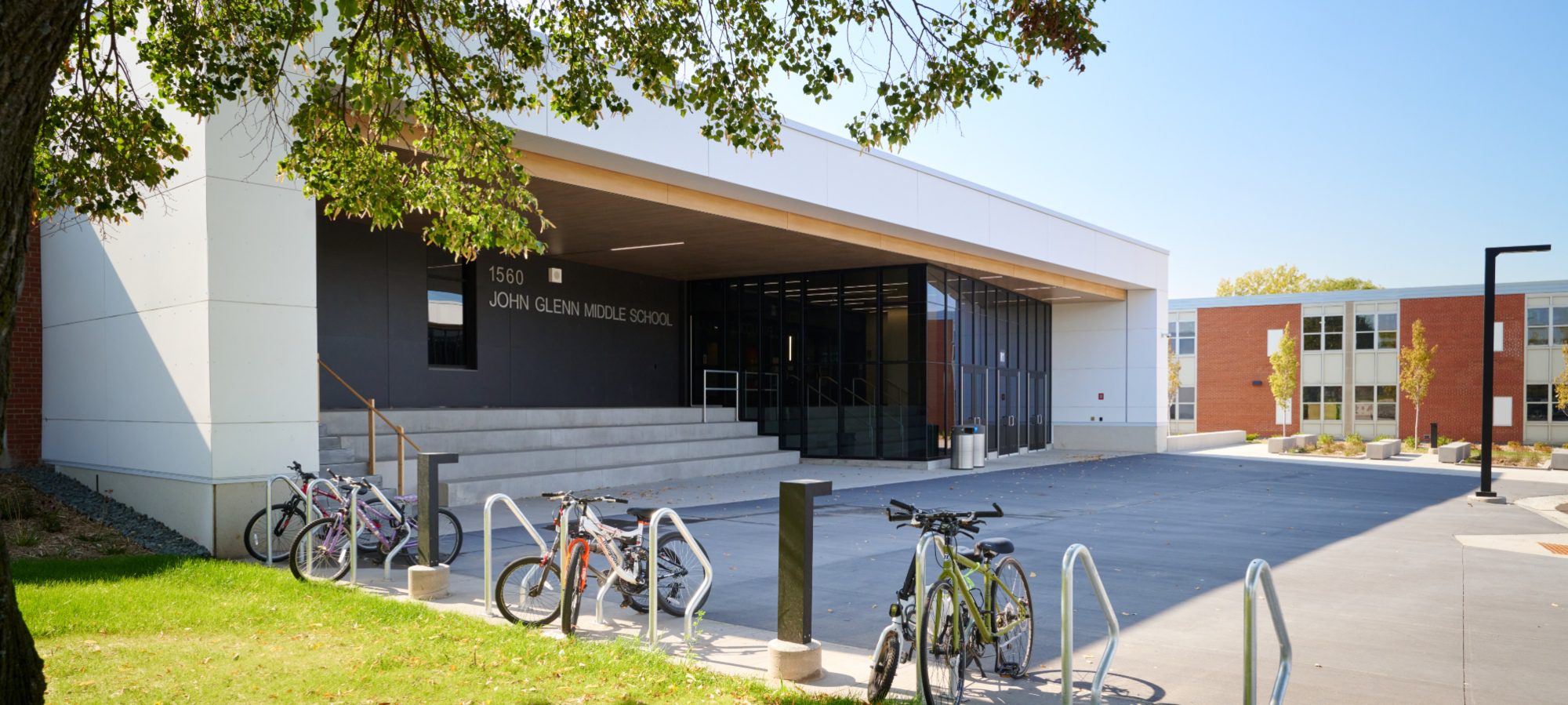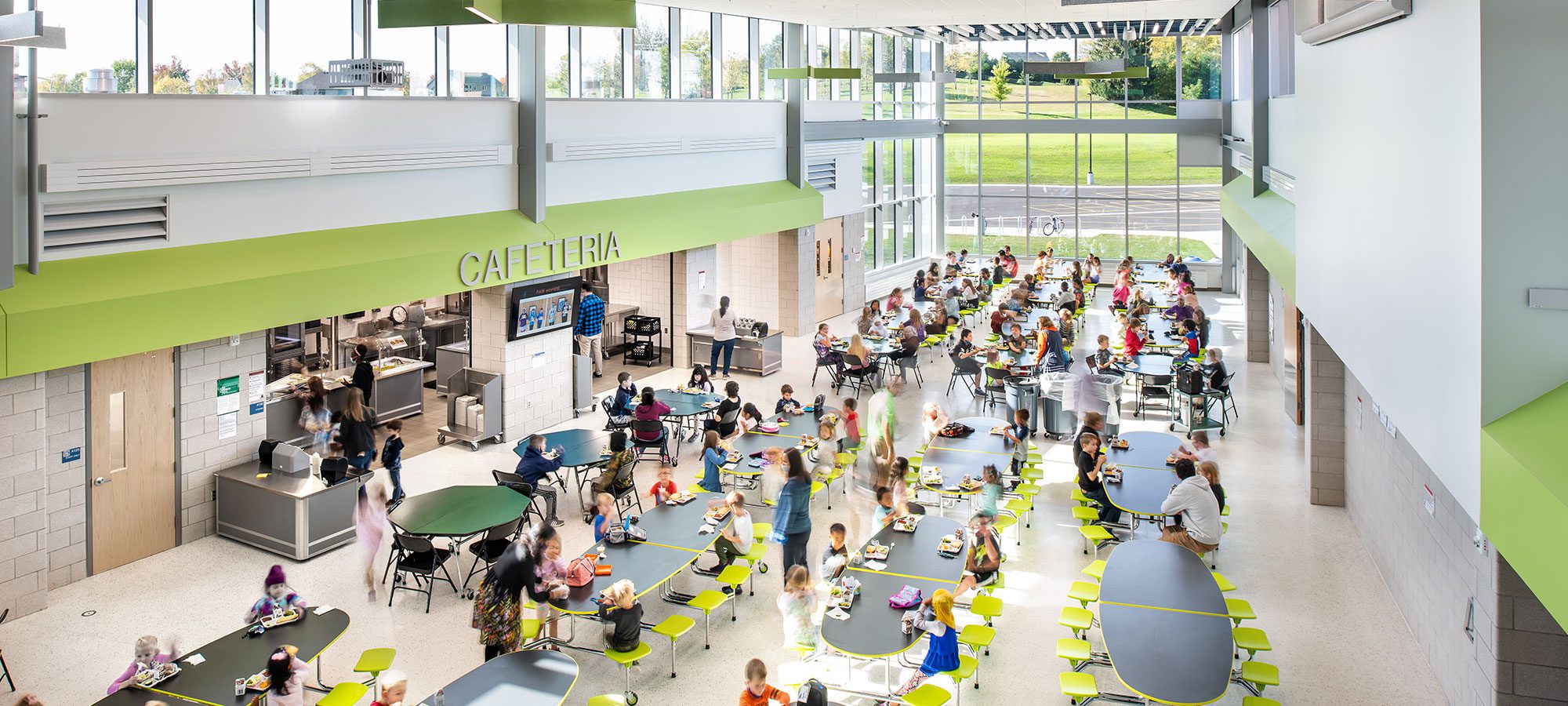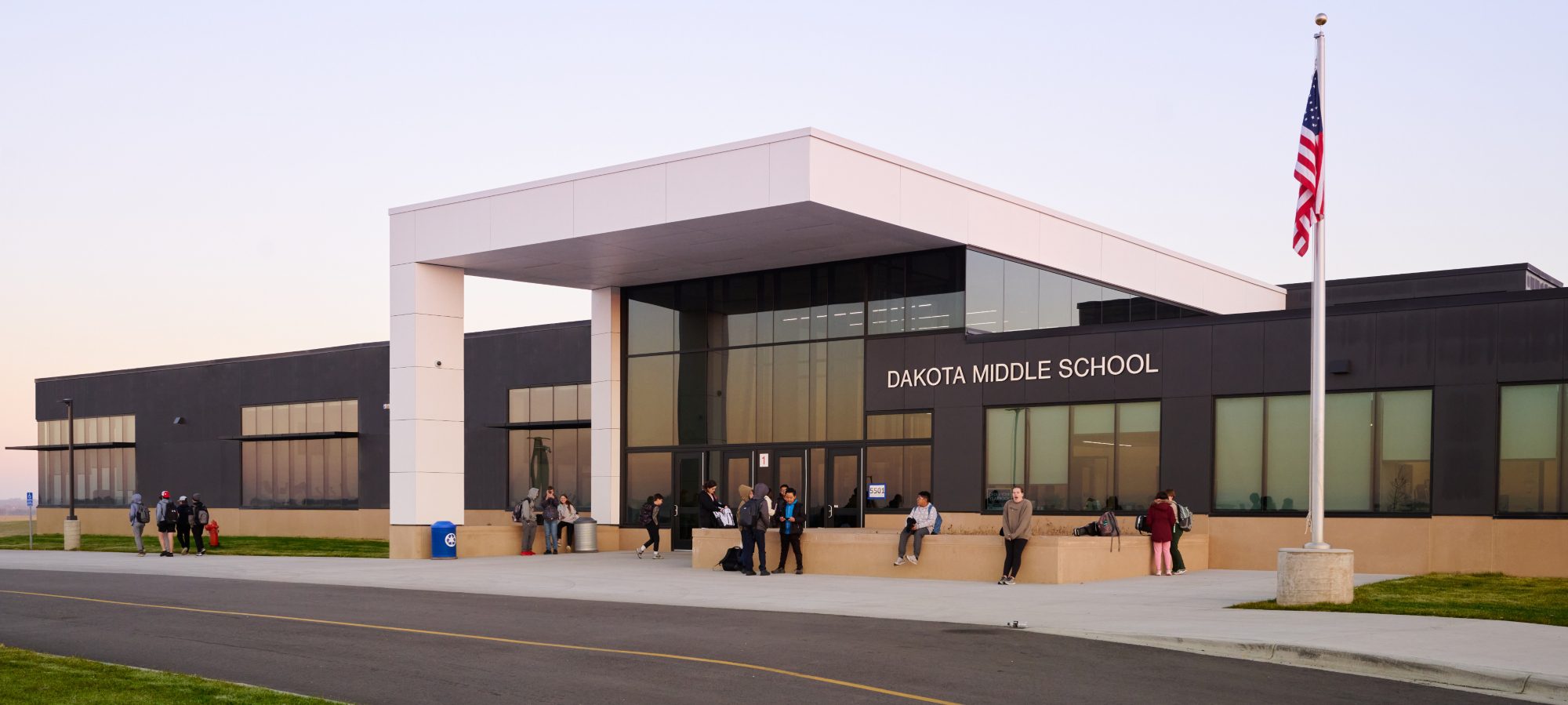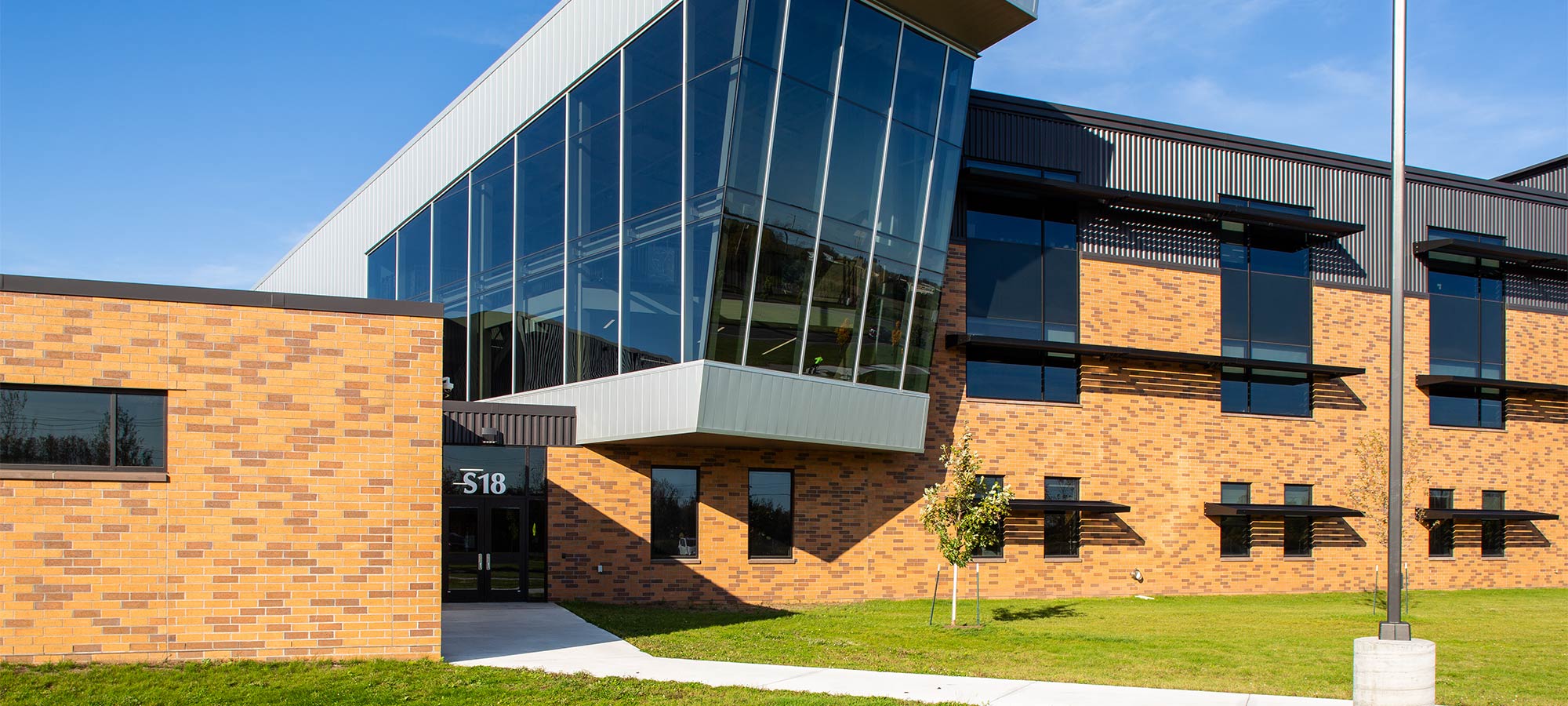John Glenn Middle School
Illuminating learning pathways
John Glenn Middle School opened in 1962 and serves approximately 1,350 students from North St. Paul, Maplewood, and Oakdale. In 2018, district officials asked LHB to redesign the aging facility to improve student learning and outcomes. They believed a well-designed environment would help kids discover their individual passions, interests, and talents, with teachers and staff serving as guides along the path.
LHB’s 133,895 SF renovation and 87,668 SF addition encourage exploration by removing barriers to information, and interaction. Changes include:
- A commons space that adjoins the media center, creating a place where students can open a laptop, collaborate with others, curl up with a book, or meet with teachers or social workers.
- Labs for hands-on learning that go beyond typical wood-and-metal shop spaces to include spaces for experimentation with robotics, propulsion, and even food.
- A room off the cafeteria that allows students to work on group projects during lunch and throughout the day.

Improving social dynamics
LHB’s Pre K-12 team worked closely with district officials and other stakeholders to develop a building that furthers equity, discourages bullying, and enhances inclusivity. Glass walls help staff monitor students’ moods and behavior, for example, and all-gender, single-stall restrooms have replaced traditional models. Such features reduce feelings of isolation and intimidation among students and bring them into a conversation that promotes well-being and learning.
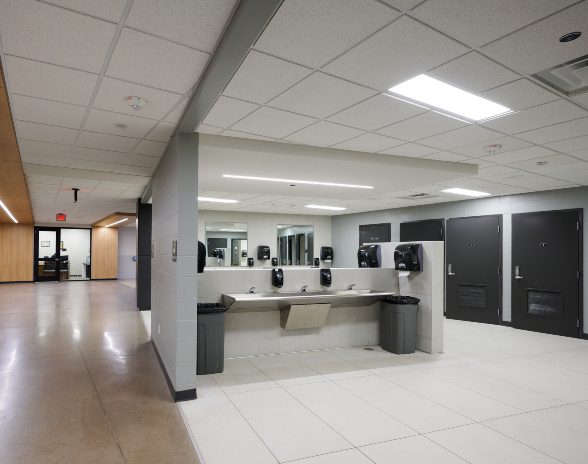
Enhancing occupant health
Wellness concepts were woven into the entire renovation, including recommendations acoustics, thermal comfort, lighting, and aesthetics, which impact mood, performance, and other health outcomes. A focus on air quality and reduced carbon dioxide improves student alertness, learning, and retention.
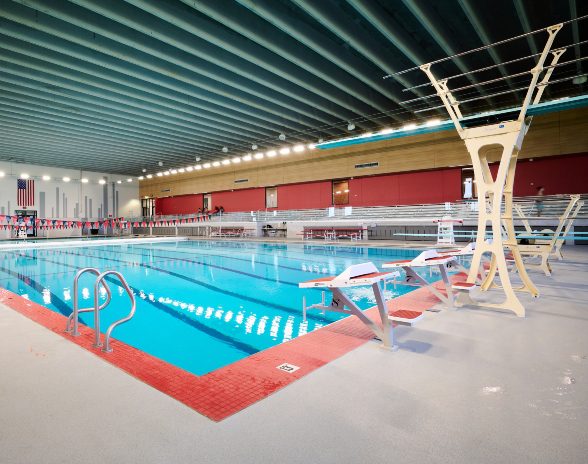
Welcoming community use
Care was taken to ensure public after-hours access to the new competition-level swimming and diving pool as well as other amenities without compromising overall building security. The size of the pool even accommodates kayaking and paddleboarding instruction. A school that serves a community is often seen in a more positive light and that positively impacts the instructors and the students.
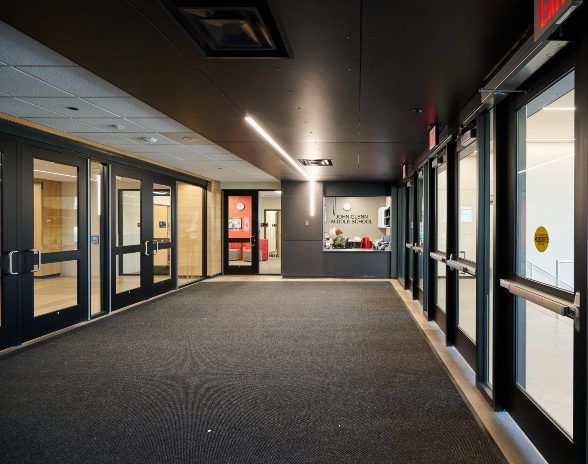
Better site circulation
A new student drop-off and bus loading area improves pedestrian safety and traffic flow. Paths and walkways throughout the site create safe connections to the surrounding neighborhood. The building’s shape encourages student gathering and social interaction in sheltered areas and enhances the architectural profile.
